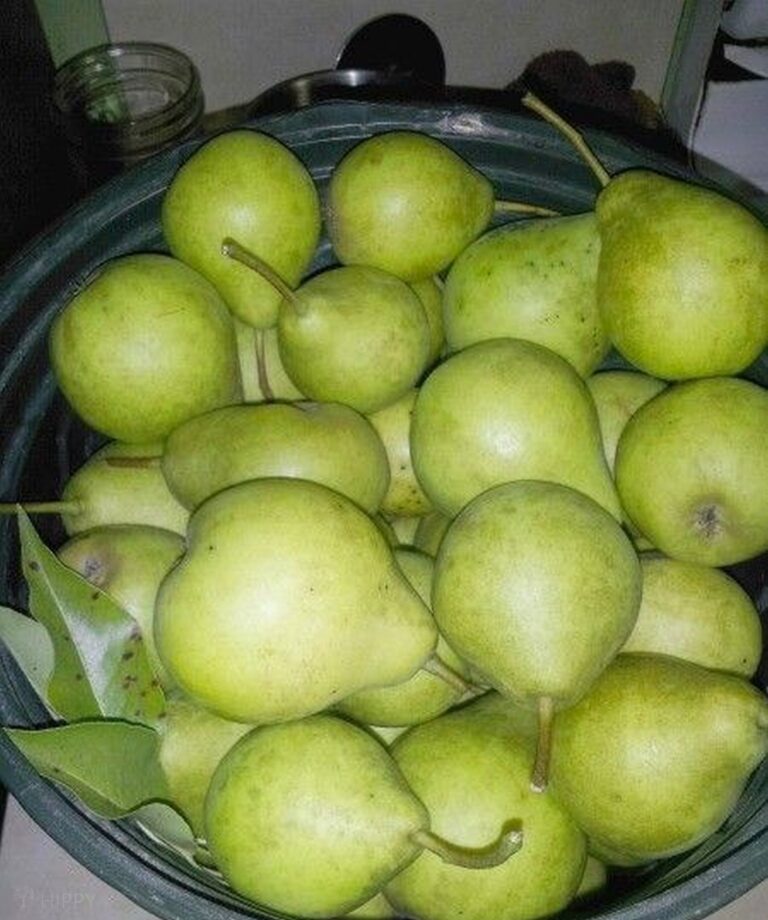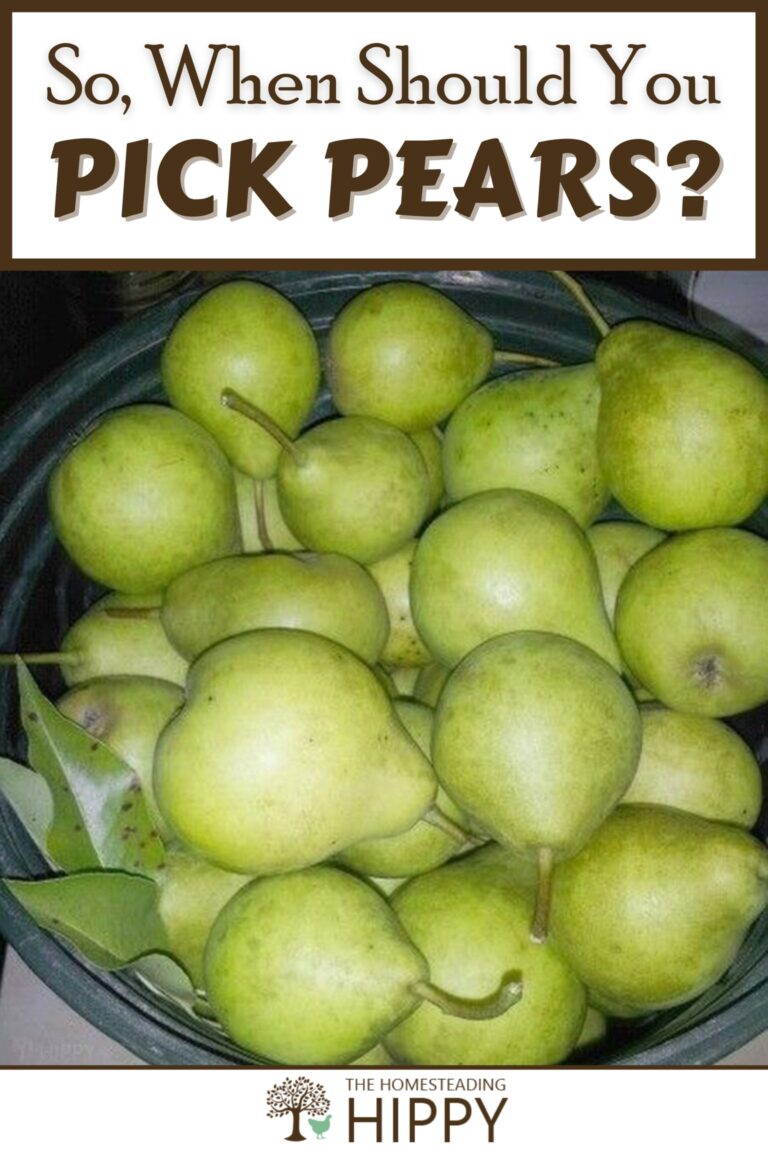Picking pears might seem like a simple task, but there is actually a right time to do it! If you want to pick the best pears, you need to wait until they are ripe, of course, but pears are tricky.

They might seem perfectly ripe on the tree and then promptly turn to mush on your counter. Younger pears seem like they never ripen or are flavorless.
What is the deal with these things? You don’t want your hard work to go to waste but it is easy to feel like you are chasing your tail. So, when should you pick pears?
You should pick pears when fully formed, but not fully ripe on the branch. This is usually around August, but the exact time will depend on the season and other factors.
Pears are troublesome in this regard compared to apples and other fruits, but the good news is that there are always methods to tell if a pear is ready to be picked.
In this article, we will discuss when the best time to pick pears is and how to tell if they are ripe. We will also answer some common questions about picking pears.
How can you tell if a pear is ready to pick?
There are a few different ways that you can tell if a pear is ready to be picked. One way is to look at the color of the pear.
Pears will usually start out green and then turn yellow or brown when they are ripe. If the pear is still mostly green, it is not quite ready to be picked.
Another way to tell if a pear is ready to pick is by gently pressing on the fruit. If the fruit gives just slightly under your pressure, it is probably ready to be picked.
If it feels hard, leave it on the tree for a little longer. Again, it should be firm, but slightly yielding. If it feels soft or squishy, it is already too far gone while on the tree.
Still another way to check for ripeness is the shape of the pear. Pears look decidedly more like, well, pears when nearing time for picking. That full, rounded-off bell shape is what you are looking for.
The last way to tell if a pear is ready to pick is by trying to pick it! A pear that is ready for picking will twist off the branch easily or snap off when you rock the pear to one side. Any pear you need to struggle to remove is not ready.
Keep all of these tests in mind when deciding whether or not it is time to pick your pears. It is probably better to err on the side of a bit early rather than too late.
Picking too late will result in a nasty, grainy, mushy one. Better it be a smidge too firm than that!
How come you don’t want to let a pear ripen on the branch?
If you let a pear ripen on the branch for too long, it will have a nasty, mushy texture, and it won’t taste as sweet. This is due to the fact that pears ripen from the center, or core, outward.
By the time the outer flesh of the pear feels “properly” ripe the inner part will be a sludgy mess. No one wants that.
Additionally, you also run the risk of animals getting to your pears before you do if you leave them on the tree for too long to ripen. Far better to get them when they are close enough and then let them ripen inside your home.
How late is too late to pick a pear?
Although this varies quite a bit depending on the type of pear, in general, you want to pick your pears before the end of August. If you wait too long the pears will be overripe, and as we have discussed, that is not ideal.
Of course, you can pick pears after this time if you are willing to take the risk. Just know that the later in the season it gets, the greater chance there is of your pears being overripe when you pick them.
With experience, you will learn how late in the season you can wait with safety.
When is the best time to pick pears?
Usually early August, though sometimes your pears will be ready a bit earlier, in late July.
As with waiting too late, it is entirely possible to pick too early, and in time you will learn when that is for the type of pear you are growing.
Picking too early means your pears will not have had time to develop all their sugars, and they will be tart rather than sweet.
Are there any dangers associated with picking pears early?
No, aside from the poor taste of low-quality fruit. Picking pears early will not cause any harm to you or the tree.
What should I do with my pears when I pick them?
Ideally, you want to let your pears ripen further after picking them. Remember: we want to pick them when they are ready to pick so they can ripen up on our counter properly!
Consider letting them sit for several days at room temperature out of direct sunlight. Check them regularly, and once they have reached the desired level of ripeness, you can eat them.
If you want to speed up the ripening process, you can toss them in a paper bag with an apple or banana for the company.
Sounds like a weird trick, and maybe it is, but it works. And the “why” behind this trick is grounded in the pear’s own ripening process.
Many fruits produce ethylene gas as part of their own ripening process, and this gas can accelerate the ripening of other, similar nearby fruit. It can also help the pears to ripen more quickly.
Just be sure to check on them periodically, as they can go from unripe to overripe very quickly when exposed to too much ethylene gas for too long. You might find a mottled brown mess if you aren’t keeping an eye on it!
Likewise, you can slow down ripening by stashing your pears in the fridge if you are not ready to eat them yet.
This will stop the ripening process, so only do this if you need to keep them for more than a few days. Pears stored in the fridge should be eaten within two weeks or so for best quality.
If you want to preserve your pears for long-term, you may want to consider canning or freezing them.
This is a great option if you have more pears than you could possibly eat before they go bad.
Canning and freezing will both help preserve the flavor and texture of your pears so you can enjoy them long after the pear season has ended.

Tom has built and remodeled homes, generated his own electricity, grown his own food and more, all in quest of remaining as independent of society as possible. Now he shares his experiences and hard-earned lessons with readers around the country.
Find out more about the team here.
